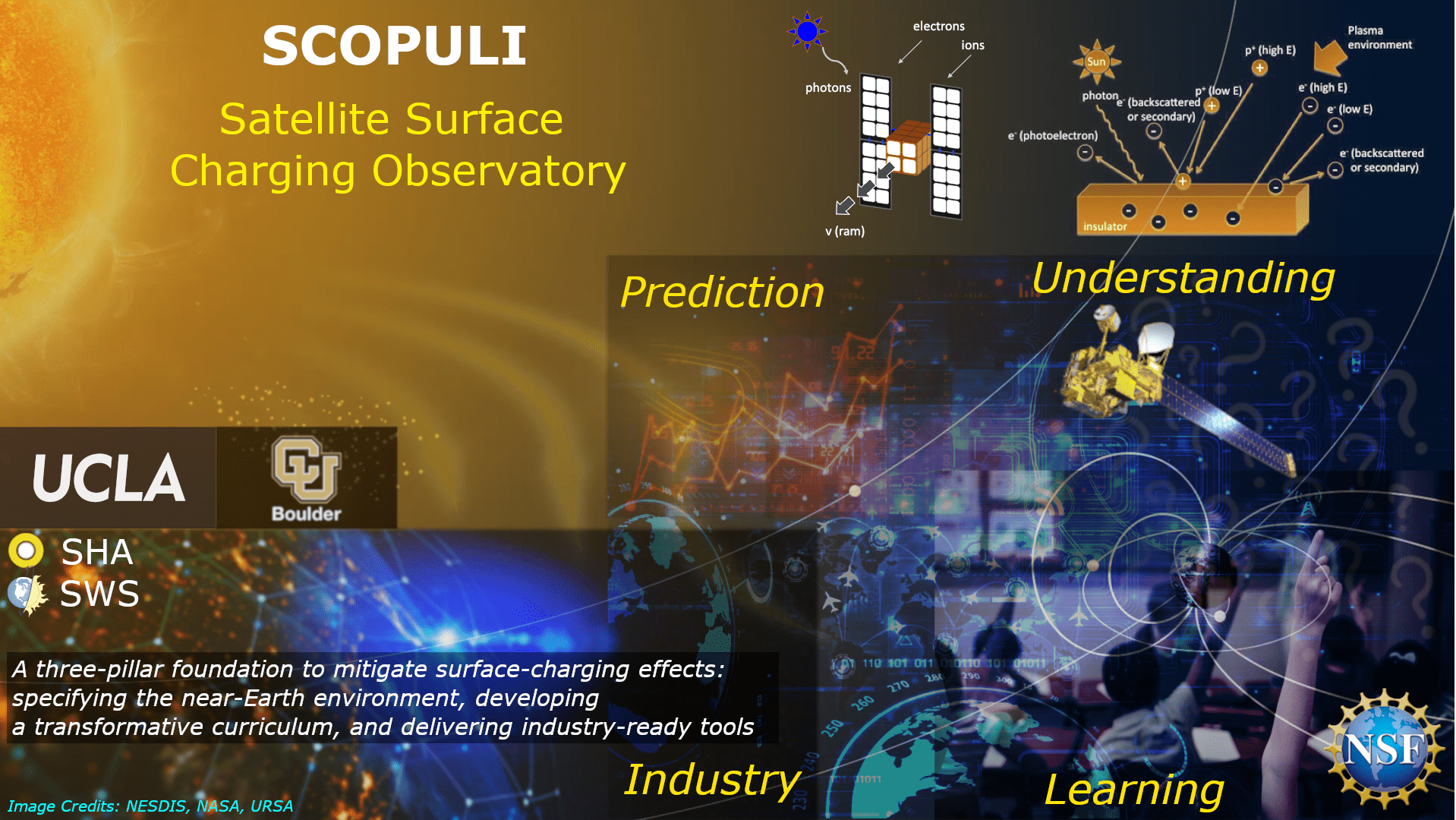Most people believe that near Earth space is an empty vacuum with no impact on their daily lives. In fact, the Earth is surrounded by electrons and ions that create beautiful auroral displays but are also a hazard for satellites. These particles collect on satellite surfaces causing the satellite to charge to high levels. A sudden discharge can cause a damaging surge in electronic components and cause the satellite to behave in unexpected ways or completely stop responding. In our interconnected world, these surges can influence our ability to communicate with each other, and to receive vital information that is transmitted through these satellites. The SCOPULI project will investigate the physical mechanisms that produce this hazardous charged particle environment, educate society about the causes and effects of these charging events, and build tools to help government and industry prevent damaging impacts to our satellite infrastructure.
The goal of this collaborative project between the University of California, Los Angeles, the University of Colorado Boulder, Space Hazards Applications, and Space Weather Solutions is to deliver an online “observatory” for studying and communicating all science related to spacecraft surface charging at Earth and beyond. The methodology leverages powerful data assimilative, machine learning, and verification techniques. These are employed to elucidate the important drivers, physical processes, and observations necessary for understanding, real-time specification, and forecast of the global eV to keV electron environment, precipitation rates, and spacecraft surface charging hazards. These models will then inform the design of curriculum materials and interactive simulations developed and piloted with practicing science teachers, as well as industry-ready tools to prepare, educate, and inform our society.
Please see the NFS Press Relase for more information on the ANSWERS award.

